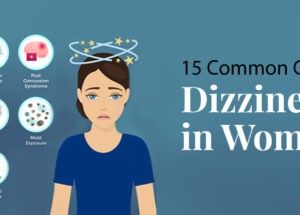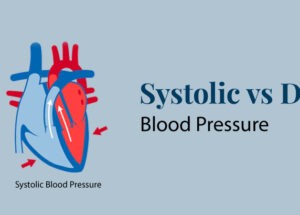Bone Cancer: Types, Causes & Symptoms
April 6, 2022

Overview
Bone cancer is when cancer cells grow out of control in your bone. This can damage normal bone tissue. Metastasis may start in your bone or spread from other parts of your body.
Bone cancer is not common. Most bone tumours are benign. They are not cancerous and do not spread to other body parts. However, they may still weaken your bones and lead to broken bones or other problems.
Primary bone cancers are cancers that form in the bone itself. However, many tumours that begin in organs or other parts of the body can also spread to the bones. These growths are called secondary or metastatic bone cancers. They are caused by cancer cells spreading from the original tumour to other parts of the body. Treatment includes surgery and chemotherapy, depending on the type of cancer.
Contents
Common types of benign bone tumours:
- Osteochondroma As the skeleton develops, this particular sort of tumour, which is composed of both cartilage and bone, might get larger. These tumours develop away from the bone.
- Giant cell tumours are usually located in the leg. However, there are rare cases in which these can also be cancerous.
- Osteoid osteoma is a common type of bone tumour in young adults, usually occurring in the early 20s.
- Osteoblastoma is a rare tumour that primarily affects the spine and long bones.
- The most common place where enchondromas (enlargements of the cartilage) are found is in the bones of the hands and feet. It often has no symptoms.
Symptoms of Bone Cancer
There are different types of primary bone cancer, some of which can be more serious than others. In addition, the signs and symptoms of cancer vary depending on the type, location, and extent of cancer.
-
- Pain
The most common sign of bone cancer is pain in the tumour area. At first, the pain may not always be there. The pain may be worse at night, can become more constant and might get worse with activity. Sometimes a tumour can cause a bone to break (fracture), which can cause a sudden onset of intense pain.
-
- Swelling and stiffness in the joints
A tumour near or in a joint may cause the joint to swell and become tender or stiff. This means that a person may have a limited and painful range of motion.
-
- Fracture
Most bone cancers don’t cause fractures, but they can weaken the bone. People with a fracture near or through a bone tumour often experience sudden severe pain in a bone that had been painful for a few months beforehand.
You may not be aware of the symptoms of bone cancer, whether it is cancer or not. When looking at an X-ray of another condition, your doctor might find the problem, such as a sprained ankle. But symptoms may include pain that:
-
-
- Located in the area of the tumour
- Dull or painful
- It gets worse when you’re active
- Will wake you up at night
-
Other symptoms related to bone tumours are
-
- Fevers
- Night sweats
- Swelling around a bone
- Limping
- Fatigue
- Weight loss
Also Read: Importance of A Balanced Diet
Risk Factors for Bone Cancer
Things that could make you more likely to get bone cancer include:
- Inherited medical conditions are passed down from one generation to the next. For example, diseases passed down through your genes, such as Li-Fraumeni syndrome and an eye cancer called retinoblastoma, can make you more likely to get bone cancer.
- Cancer treatment Bone tumours happen more often in people who’ve had radiation, stem cell transplants, or certain chemotherapy drugs for other cancers.
- Paget’s disease is a condition that affects bone. Unfortunately, these benign bone conditions may also increase your odds.
Bone Cancer Diagnosis
Your doctor will ask about your symptoms and medical history and may do a physical exam. If you have any concerns or questions, please contact your doctor. They will be through imaging tests to check your bones pictures, for example:
- The X-ray: They show the tumours and how big they are.
- CT scans are medical images that can help doctors see inside a person’s body. A computer uses X-rays to create more detailed pictures.
- MRIs are a type of imaging that can be used to see inside the body. These medical devices use a solid magnet to visualise inside your body.
- A PET scan is a medical procedure that uses a radioactive isotope to produce body images. A technician will inject radioactive glucose (sugar) into your vein. The scanner detects cancer cells, which use more glucose than normal cells.
- A bone scan is a medical procedure that uses X-rays to check for fractures or other damage to bones. Then, the technician will inject another radioactive substance into the vein. It collects in your bones where a scanner can see it.
Also Read: An Introduction About Cancer And Its Treatment
Bone Cancer Treatment
The common treatment for Bone Cancer Include:
- Limb salvage surgery: Your doctor removes the cancerous portion of the bone but leaves the surrounding muscles, tendons, and other tissues intact. They put a metal implant in place of the bone.
- Radiation therapy is a form of cancer treatment that uses high-energy radiation to kill cancer cells. This kills cancer cells and shrinks tumours with strong x-rays. Surgery and radiation are often used together to treat cancer.
- Chemotherapy is a type of cancer treatment. It involves the use of drugs to kill cancer cells. This kills the cancer cells with the cancer drugs. Your doctor might use it before surgery, after surgery, or with metastatic cancer.
- Targeted therapy: Treatment directed explicitly at the cause of a disease or condition. This cancer treatment explicitly targets certain genetic, protein, or other changes in or around cancer cells.
FAQ
1. Where does bone cancer pain usually start?
The most common sign of bone cancer is pain in the tumour area. At first, the pain may not always be there. The pain may get worse at night or when the bone is used, such as when walking for a tumour in a leg bone. The pain might become more constant, and it may worsen with activity.
2. What does pain from bone cancer feel like?
Cancer in the bone can cause intermittent or progressively severe bone pain in specific areas where the cancer is located. Bone pain is described as aching, throbbing, stabbing, and excruciating.








